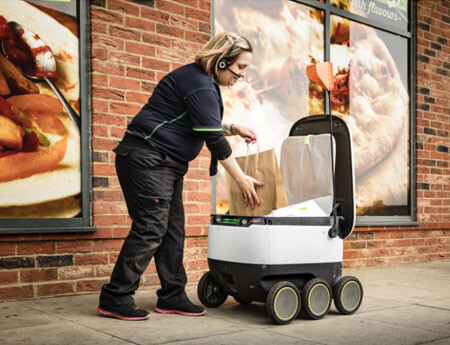Automated Driving Systems Framework
In 2019, legislation was enacted that authorized the operation of automated driving systems with Senate File 302 (2019 session) and Iowa Code sections 321.514 to 321.519 . This legislation defines automated driving systems among other new terms and establishes key elements of operation, insurance, accidents, and an on-demand driverless-capable vehicle network. The legislation also provides the Iowa DOT broad rulemaking authority to develop administrative rules which include the identification of driverless capable vehicles in registration, potential operational restrictions as a condition of registration, as well as an exemption process for testing. The administrative rules tied to ADS became effective in October 2021.
Automated Truck Platooning & Following Distance
Distance Requirements
Iowa law does not specifically authorize connected platooning or cooperative truck automation, but in 2019, legislation (HF 387) removed the following distance requirements for both passenger and commercial motor vehicles (300 feet for motor trucks or a motor vehicle drawing another vehicle and 500 feet for motor vehicles following another in convoy or caravan).
Platooning Process
This legislation maintains the reasonable and prudent statute as it pertains to following distance. While this legislation doesn’t directly address automated truck platooning, the removal of the following distance requirements removed a barrier to such operations in Iowa. Automated truck platooning is a process where typically two trucks follow within roughly 80 feet (or 25 meters) of each other to take advantage of potential fuel efficiency benefits.
Considerations
Another business case in support of this automation use case is it could potentially allow for the second truck, following in the platoon, to not have a person actively driving the vehicle and resting while the vehicle is operating. In doing so, this could allow for longer time periods of truck operation while allowing drivers to meet federal hours of services requirements.
Personal Delivery Devices
-

In 2021, legislation was enacted (HF304) that authorized the operations of personal delivery devices on public roadways or pedestrian areas (e.g., sidewalk). This bill includes definitions such as a personal delivery device is not to exceed 550 lbs. excluding cargo. Personal delivery devices are not considered vehicles nor subject to Iowa automated driving systems legislation and must comply with Iowa law related to pedestrians. A personal delivery device may operate on any of the following:
- A pedestrian area (e.g., sidewalk) at a speed not to exceed 6 MPH
- Can operate on roads with a posted speed less than 40 MPH while not to exceed 20 MPH or the posted speed limit, whichever is lower
- Operates as far to the right from the center of the road as is practicable
Unique identification must be included as well as lighting or other equipment to make the device easily recognizable from 500 feet. In the interest of public safety, a local authority may prohibit the operation of personal delivery devices on certain roads and pedestrian areas within its jurisdiction if the operation constitutes a safety hazard. Requires general liability insurance coverage of no less than $500,000.